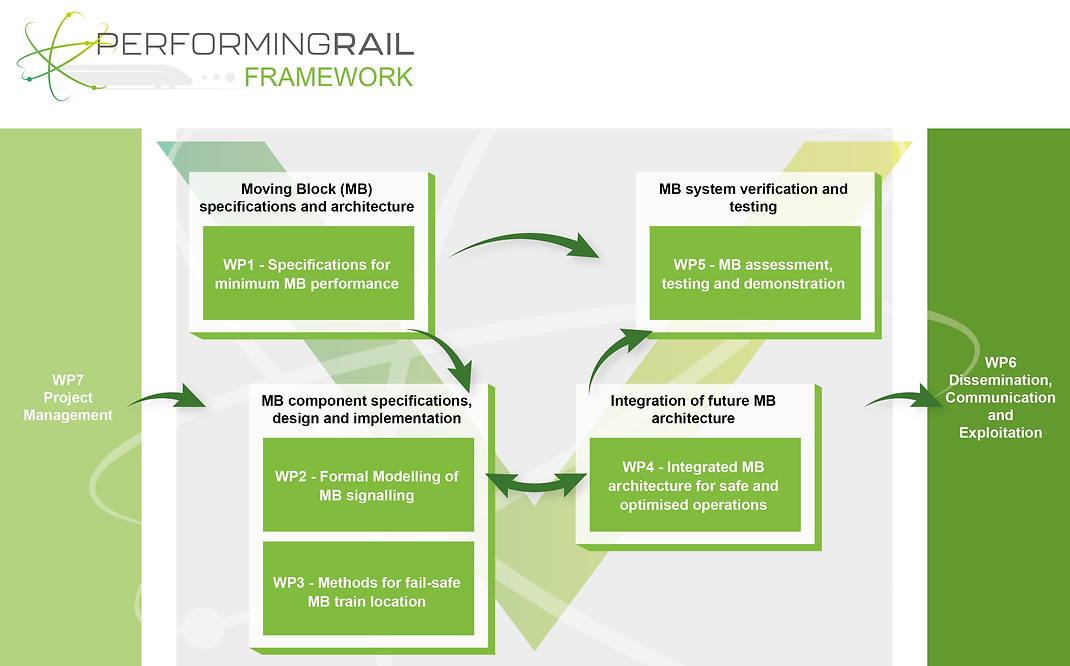PERFORMINGRAIL
PERformance-based Formal modelling and Optimal tRaffic Management for movING-block RAILway signalling
The railway industry is currently researching next-generation signalling systems as an economic solution to maximise the network capacity without the excessive cost of building new tracks.
Moving Block and Virtual Coupling signalling represent the most promising operational paradigm shift, where vital track-side equipment is migrated on board the trains in such a way that all safety functions traditionally linked to fixed-block sections can move along with the trains themselves.
Research so far performed on Moving Block and Virtual Coupling, indicates that substantial capacity gains over fixed-block signalling can only be attained if an effective management and control of railway traffic is also considered in complex interlocking areas where the traffic may not be effectively coordinated.
With the lack of vital track-side equipment, the safety and performance of Moving Block signalling and its soft wall variant (i.e. Virtual Coupling), are strongly dependent on safe operational principles as well as on reliability, availability, and accuracy of the on board Train Integrity Monitoring (TIM), the train location report and the communication layers.
PERFORMINGRAIL implements a holistic system approach to address the open challenges for the Moving Block and Virtual Coupling concepts in terms of safe operational principles and specifications, reliable TIM technologies, high-accuracy train localisation and optimised moving-block traffic management algorithms. The main objectives of the project are to enhance and verify existing specifications for moving-block signalling, while developing formal models, algorithms and proof of concepts to test and validate an integrated future moving-block system architecture that will provide safe and effective operational performances.

For more info: https://www.performingrail.com/





